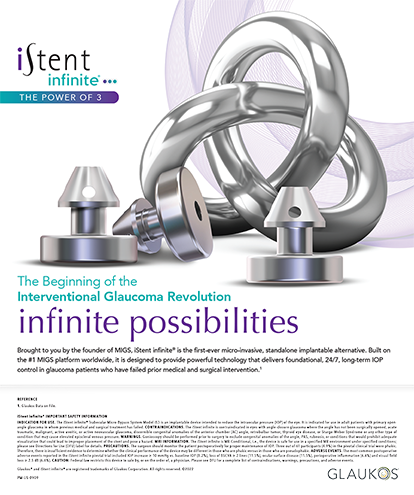For the most part, physicians in general and ophthalmologists specifically are compulsive, detail-oriented overachievers. I sadly admit being accused of this malady, and I know I come by my affliction honestly. I recall coming home, when in second grade, with a report card containing four 100s and a 99. I expectantly handed that oh-so-important piece of paper to my parents. My mother examined it, smiled, and asked me what happened to the missing point. This upbringing, which I am certain many of Cataract & Refractive Surgery Today's readers share in some way, was the perfect training for a modern refractive cataract surgeon.
We refractive cataract surgeons do not settle for removing the cataract. We multitask by combining the cataract surgery with a refractive solution. To optimize our results, we must continue to improve our keratometry and axial length measurements, and we must use an advanced-generation IOL calculation formula.
The modern era of refractive cataract surgery was essentially ushered in with the development of the IOLMaster (Carl Zeiss Meditec, Inc.) and the Lenstar LS900 (Haag-Streit AG), and it was advanced with intraoperative aberrometry. These technologies have given us the tools to achieve emmetropia in a greater percentage of our patients.
A majority of us believes we attain emmetropia for a high percentage of patients. The peer-reviewed literature shows our fallacy and suggests that we achieve emmetropia in slightly more than half of our patients. As Mark Twain said so eloquently, “It ain't what you don't know that gets you into trouble. It's what you know for sure that just ain't so.” The only way to know our results is to track them, so that is our next step.
This edition of CRST addresses the issue of what to do when we do not achieve emmetropia in patients who desire improved UCVA after cataract surgery. In many practices, residual refractive error is the number one reason for patients' postoperative dissatisfaction. For those with residual cylinder alone, limbal relaxing incisions are experiencing a resurgence in popularity, thanks to the advent of the femtosecond laser, which has transformed this technique from an art to a science. Patients with residual hyperopia or myopia have three options, which are the subject of this month's feature series: excimer laser photoablation in the form of PRK or LASIK, IOL exchange, and piggyback IOLs. These alternatives all have advantages and disadvantages that we must weigh and discuss with our patients.
In general, I prefer PRK or LASIK for myopic patients when I do not want to enter the eye a second time. They are often the most accurate and safest procedures for the patient, and we refractive cataract surgeons should embrace this vital tool for improving outcomes. For hyperopic patients, I favor an IOL exchange or a piggyback IOL. Stephen Lane, MD, who has written extensively on the procedure, describes the IOL exchange, and Jonathan Rubenstein, MD, beautifully lays out the indications and techniques for a piggyback IOL, an underutilized procedure. Our final decision depends on multiple factors, including the type of IOL previously inserted, anterior chamber depth, status of the posterior capsule, and how long the IOL has been in the eye.Providing visual rehabilitation to millions through safely and efficaciously performed cataract surgery is no longer our ultimate aim. To achieve a perfect score, we have added the elimination of glasses for distance and often for near, and the FDA's recent approval of a microstent for glaucoma surgery may further incorporate into our goal the reduction or elimination of glaucoma medications. Cataract surgery has become a life-changing procedure. To meet the lofty—yet achievable—demands of our patients, we must do a better job of achieving emmetropia.


